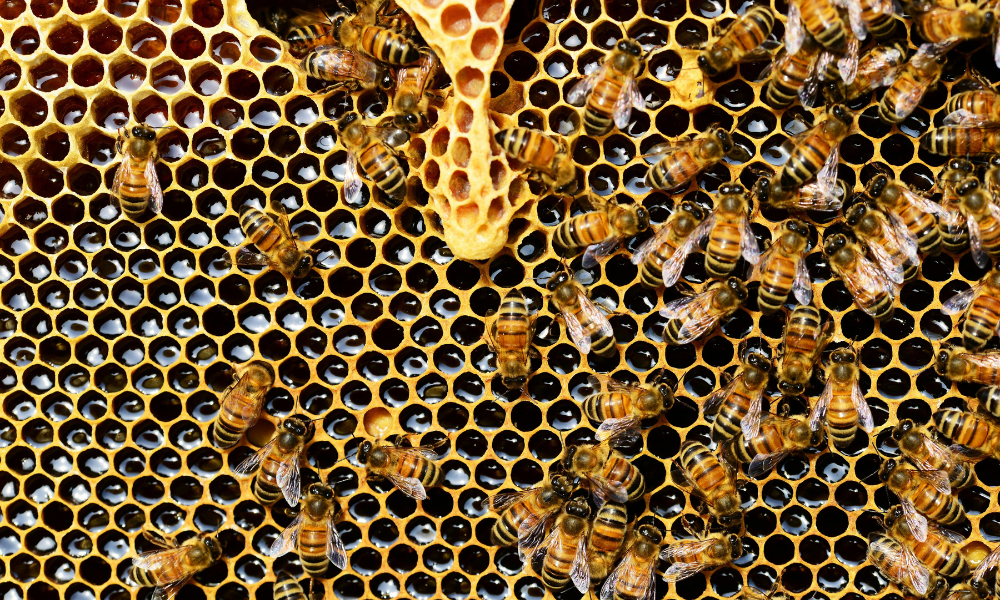
As the weather turns colder, seasonal infections begin to rise – bringing renewed attention to the growing challenge of antimicrobial resistance (AMR). With clinicians and healthcare systems under increasing pressure, the spotlight is widening onto alternative antimicrobial solutions. One area gaining scientific interest is the use of honey, particularly from stingless bees, for its notable antibacterial properties.
Below, we summarise recent research exploring the potential of stingless bee honey as a complementary or alternative approach in the fight against resistant pathogens.
Rethinking Antimicrobials: Why Honey Is Back in Focus
AMR continues to escalate globally, driven by the misuse and overuse of antibiotics in both clinical and agricultural settings. Pathogens such as MRSA exemplify the growing threat: widespread, highly transmissible, and increasingly unresponsive to conventional antibiotics. Meanwhile, the development pipeline for new antimicrobials remains limited, with high costs and challenging regulatory pathways slowing progress.
The healthcare sector is therefore exploring naturally derived products with longstanding evidence of therapeutic use, and honey is emerging as a credible candidate.
The Science Behind Honey’s Antibacterial Activity
Honey’s antimicrobial function is multifactorial, combining:
- High sugar concentration, which exerts osmotic pressure and dehydrates bacterial cells.
- Low pH, making the environment unfavourable for microbial growth.
- Hydrogen peroxide production, generated when honey is diluted – a known antimicrobial mechanism.
- Non-peroxide activity, involving bioactive compounds unique to certain honeys, especially those from stingless bees.
These properties work synergistically, contributing to honey’s longstanding role in wound care and infection management.
Traditional Use and Modern Interest in Stingless Bee Honey
Stingless bee honey has been used for centuries in traditional medicine, particularly across Africa, Asia, and Latin America. Its perceived potency has driven scientific research to understand its unique composition and bioactivity.
Recent studies, including research from Tanzania, have aimed to quantify the antimicrobial potential of stingless bee honey against clinically relevant bacterial strains, including antibiotic-resistant organisms.
Inside the Study: Methods and Materials
Honey samples were collected from stingless bee colonies in two biologically diverse regions of Tanzania: a mountainous inland area and a coastal mangrove-rich region.
Bacterial strains tested included gram-positive and gram-negative species, some known for antimicrobial resistance.
Antibacterial testing used standard agar diffusion assays to measure zones of inhibition.
Chemical profiling focused on phenolic and flavonoid content, compounds commonly associated with antimicrobial and antioxidant activity.
Key Findings
- Broad Antibacterial Activity
All honey samples demonstrated the ability to inhibit bacterial growth, though effectiveness varied by sample and bacterial strain. Notably, some samples showed strong inhibition against MRSA, reinforcing honey’s potential role in managing resistant gram-positive organisms.
- Activity Beyond Hydrogen Peroxide
When hydrogen peroxide was neutralised, the honey retained much of its antibacterial effect. This suggests that non-peroxide bioactive compounds – which are particularly abundant in stingless bee honey – contribute significantly to its antimicrobial performance.
- Rich Phytochemical Profile
The honey contained substantial levels of phenolics and flavonoids, though total concentration did not always predict antibacterial potency. This indicates that specific compounds, rather than overall quantity, may drive bioactivity.
- Differential Susceptibility
Gram-positive bacteria were generally more susceptible to honey than gram-negative species such as E. coli. This aligns with broader findings on honey’s antimicrobial spectrum.
What This Means for Pharma and Healthcare
The study reinforces the potential of stingless bee honey as a complementary antimicrobial agent, particularly in:
- Wound care and topical infection management
- Adjunct strategies for resistant pathogens like MRSA
- Resource-limited settings, where access to new-generation antibiotics may be constrained
Its stability, natural origin, and broad activity profile make it an attractive candidate for incorporation into advanced wound dressings, gels, and supportive care products.
However, translation into formal therapeutic use requires:
- Standardisation of honey composition
- Identification and isolation of key active compounds
- Controlled clinical trials to validate efficacy and safety
- Regulatory frameworks for medical-grade honey products
Looking Ahead
As winter pressures increase and the AMR crisis continues to evolve, the healthcare and pharmaceutical communities are looking beyond traditional antimicrobials for innovative, evidence-based solutions. Research into stingless bee honey provides compelling early insights and highlights the potential of natural products to support modern infection management strategies.
While more clinical work is needed, this emerging field offers a promising avenue for new therapeutic development – one rooted in ancient practice but guided by contemporary science.
Back to News + Insights